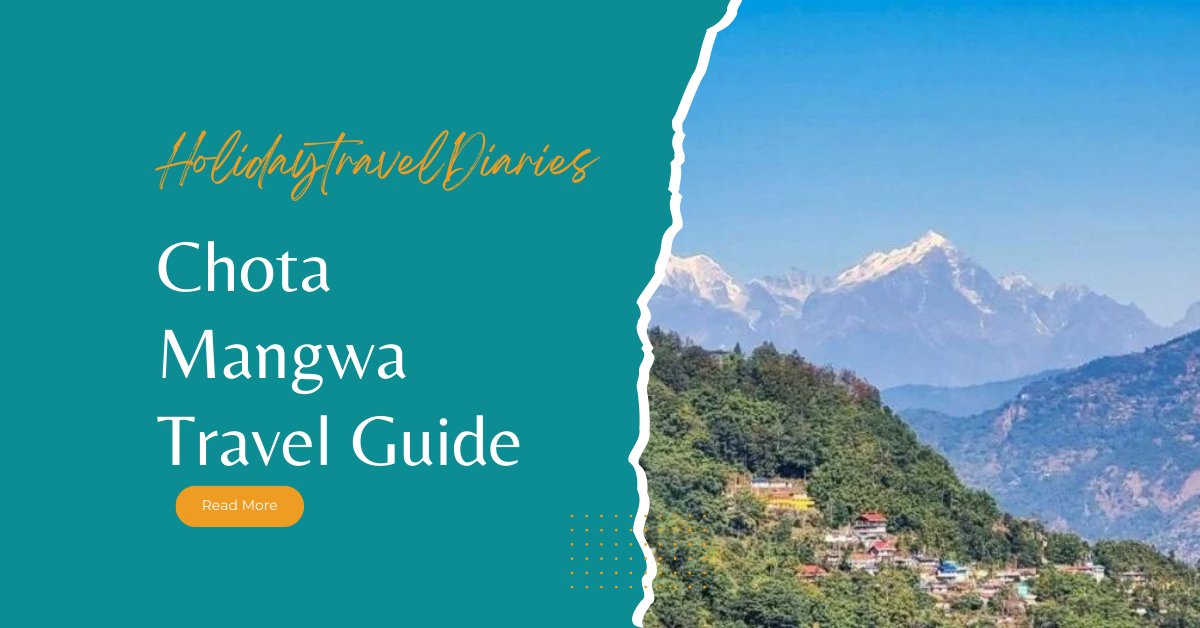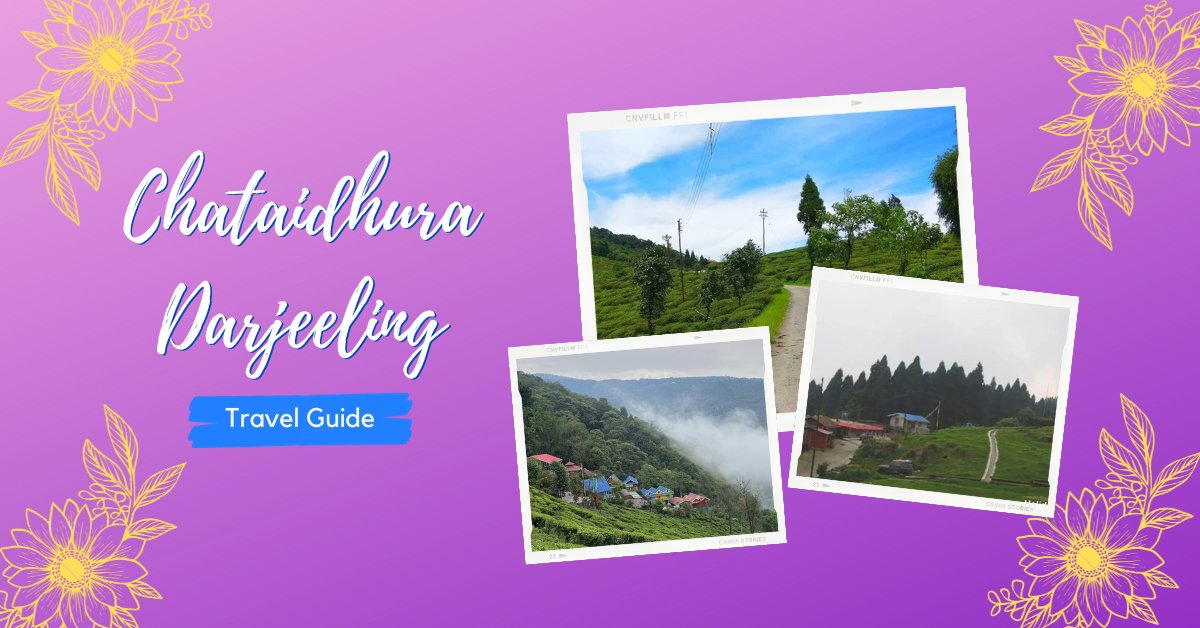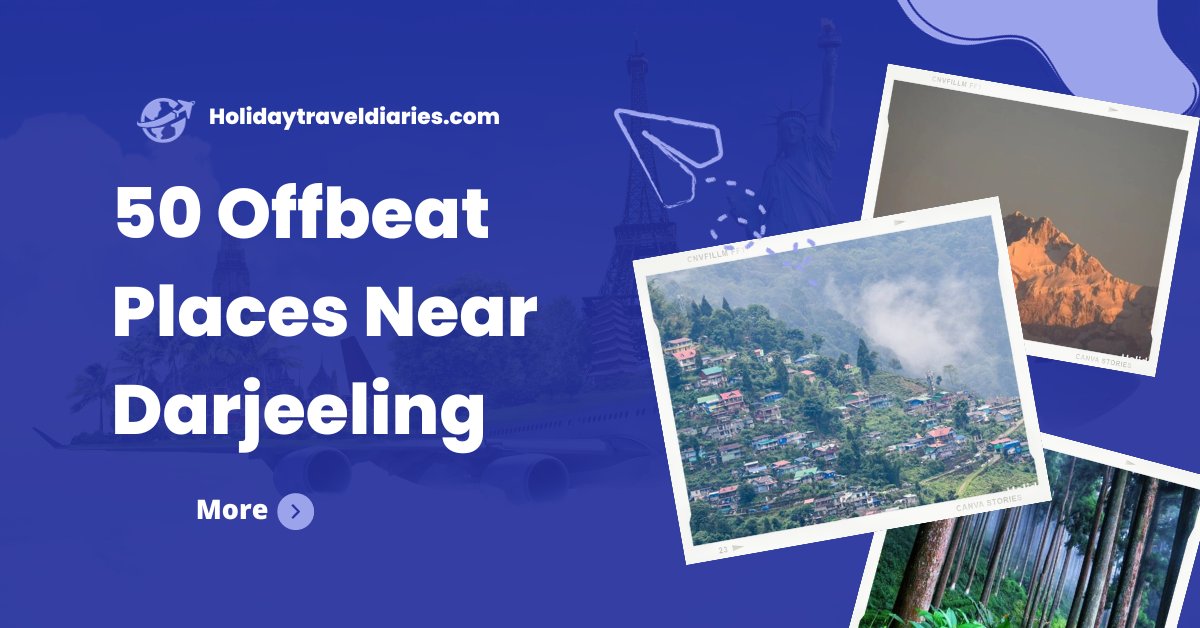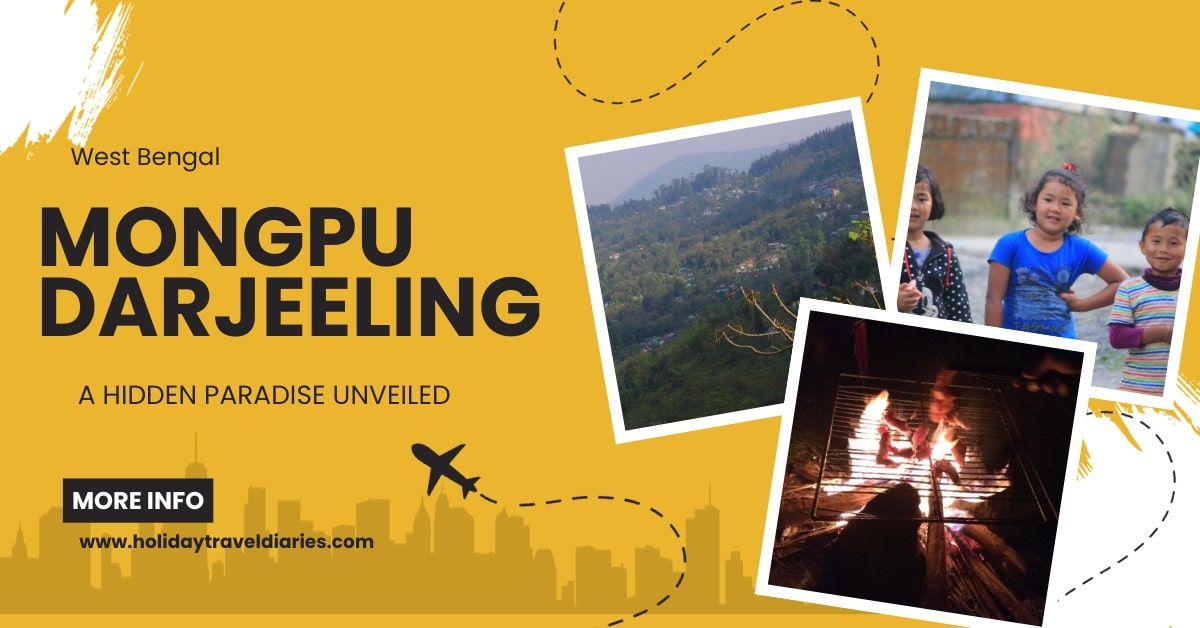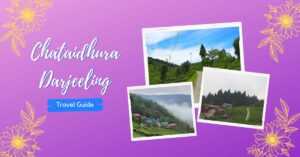Nestled in the undulating hills of Darjeeling, Chota Mangwa emerges as a hidden jewel, beckoning travelers with its untouched beauty and tranquil charm. Tucked away from the tourist troves, this idyllic village exudes an old-world charm, offering a perfect respite for those seeking serenity amidst nature’s embrace. Chota Mangwa, adorned with terraced tea gardens, unfolds like a vibrant canvas, painting the landscape with hues of green against the backdrop of the mighty Himalayas.
As the sun casts its golden glow upon the terracotta rooftops, the village comes alive with a timeless allure. Embark on a journey with me as we unravel the secrets of Chota Mangwa, exploring its tea-scented air, meeting the warm-hearted locals, and immersing ourselves in the pristine beauty that defines this lesser-known gem in the heart of Darjeeling.
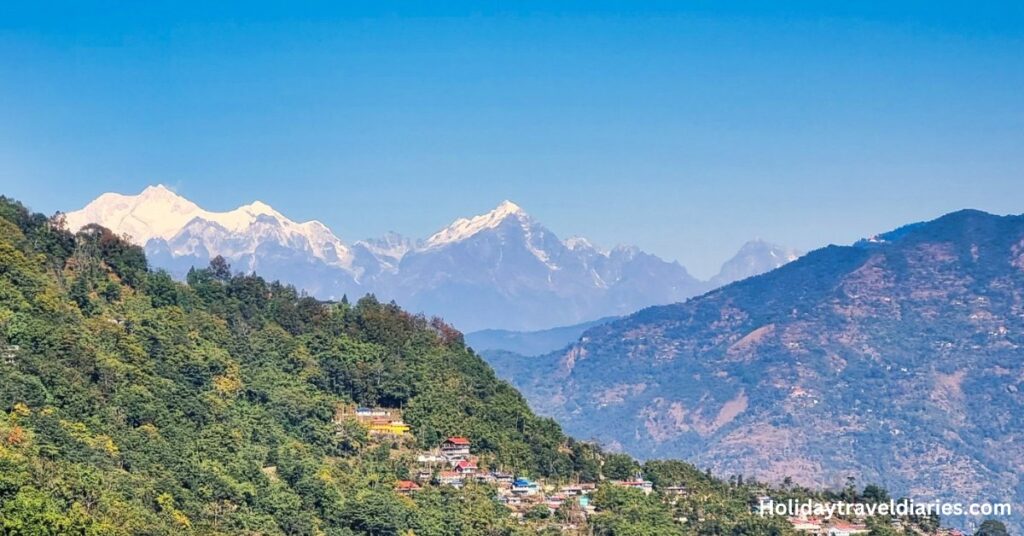
Chota Mangwa beckons with its picturesque landscapes and tranquil ambiance. To make the most of your visit, it’s essential to plan your journey wisely. Here’s a comprehensive guide on reaching Chota Mangwa by air, road, and rail:
How to Reach Chota Mangwa?
By Air: The nearest airport to Chota Mangwa is Bagdogra Airport, approximately 70 kilometers away. Upon landing, travelers can hire a taxi or opt for pre-booked car services for a scenic drive through tea gardens and winding mountain roads.
By Road: For those who prefer road travel, Chota Mangwa is accessible via Darjeeling town. The journey involves navigating through the charming hilly terrain. From Siliguri or Darjeeling, buses, cabs, and shared jeeps are available, offering a budget-friendly option for travelers.
By Rail: The nearest major railway station is New Jalpaiguri (NJP), around 66 kilometers from Chota Mangwa. From NJP, one can hire a cab or take a shared jeep to reach the destination. The rail route offers breathtaking views of the Himalayan foothills, building anticipation for the scenic wonders awaiting Chota Mangwa.
Shared Car Options: Travelers seeking a shared car option can easily find shared jeeps or cabs from Siliguri, Darjeeling, or NJP. Shared cars are not only economical but also provide a chance to interact with fellow travelers, enhancing the overall journey experience.
Attractions of Chota Mangwa
1. Old Monastery: Begin your sojourn with a visit to the Old Monastery, a spiritual haven that exudes tranquility. Surrounded by verdant hills, this ancient monastery invites you to experience the quietude of the Himalayas and witness the vibrant Buddhist culture that permeates the region.
2. Rungli Rungliot Tea Garden: Just a short drive from Chota Mangwa, the Rungli Rungliot Tea Garden unveils itself like a green carpet draped over the hills. Engage in a guided tour to witness the meticulous process of tea-making, as you stroll through the neatly manicured rows of tea bushes. The aroma of fresh tea leaves and the panoramic views make this a sensory delight.
3. Lopchu: A quaint hamlet, Lopchu, offers a peaceful interlude in your exploration. Known for its tea estates and the Lopchu Tea Factory, this charming village allows you to savor the simplicity of rural life. Don’t miss the opportunity to taste the locally produced tea, a flavor that encapsulates the essence of the Darjeeling hills.
4. Bara Mangwa: Venture further to Bara Mangwa, where the Teesta River meanders through the valleys, creating a picturesque setting. The village, adorned with orange orchards, offers breathtaking views of the Himalayan range. Engage in a leisurely walk through the village, interacting with the warm locals and immersing yourself in the serenity of the surroundings.
5. Tinchuley: Tinchuley, with its terraced farms and charming homestays, is a haven for nature enthusiasts. The village, surrounded by orange orchards and pine forests, invites you to unwind amidst nature’s bounty. Explore the nearby Tinchuley Monastery and relish the warmth of a homestay experience, immersing yourself in the local culture.
6. Kalimpong: A short drive from Chota Mangwa, Kalimpong is a bustling town that seamlessly blends tradition with modernity. Explore the Durpin Monastery, offering panoramic views of the Himalayas, and stroll through the bustling markets that showcase local craftsmanship. Kalimpong adds a vibrant touch to your Chota Mangwa experience.
Chota Mangwa and its surroundings are a testament to the diverse offerings of the Darjeeling district. Each destination, whether it’s the tranquility of an old monastery or the vibrant markets of Kalimpong, contributes to a tapestry of experiences that linger in your memories. Embrace the allure of this hidden gem, and let the hills of Chota Mangwa weave their magic on your journey.
Where to Stay in Chota Mangwa?
When it comes to choosing a place to stay in this idyllic locale, options abound to ensure a memorable and comfortable retreat:
- Chota Mangwa Eco Huts: Immerse yourself in the lap of nature with eco-friendly huts that blend seamlessly into the surroundings. These huts offer a rustic charm and an authentic mountain experience.
- Tea Estate Bungalows: Indulge in the heritage of Chota Mangwa by staying in one of the tea estate bungalows. These colonial-era accommodations provide a glimpse into the region’s history while offering modern comforts.
- Homestays: Experience the warmth of local hospitality by opting for homestays. Engage with the friendly residents, savor home-cooked meals, and gain insights into the culture and traditions of Chota Mangwa.
- Luxury Resorts: For those seeking a touch of luxury, Chota Mangwa boasts resorts that blend opulence with the tranquility of the Himalayan foothills. Enjoy modern amenities against the backdrop of breathtaking vistas.
- Tented Camps: Connect with nature on a deeper level by choosing tented camps. Surrounded by the lush greenery, these camps offer a camping experience with added comfort.
Whether you prefer the charm of eco huts, the history of tea estate bungalows, the warmth of homestays, the luxury of resorts, or the adventurous spirit of tented camps, Chota Mangwa ensures a variety of stays to cater to every traveler’s preference. Each option presents an opportunity to unwind, rejuvenate, and connect with the enchanting spirit of this Himalayan haven.
Best Time to Visit Chota Mangwa
The timing is key to unlocking the true essence of this enchanting destination. Here’s a guide in point format to help you decide the best time to visit:
- Spring Splendor (March to May):
- Witness the orchards in full bloom.
- Enjoy pleasant weather with temperatures ranging from 10°C to 20°C.
- Monsoon Magic (June to September):
- Experience lush greenery and rejuvenated landscapes.
- Be prepared for occasional rainfall and misty panoramas.
- Autumn Allure (October to November):
- Enjoy clear skies and crisp temperatures.
- Witness the post-monsoon vibrancy of the surroundings.
- Winter Wonderland (December to February):
- Embrace the chilly charm with temperatures between 2°C to 10°C.
- Behold panoramic views of snow-capped Himalayan peaks.
Choosing the right time ensures you unravel Chota Mangwa’s diverse beauty, whether it’s the vibrant blossoms of spring or the serene snowscapes of winter. Tailor your visit to align with your desired Chota Mangwa experience.
Things to Carry While Travelling To Chota Mangwa
- A travel bag.
- A torch.
- A slipper.
- Travel shoes
- Plastic for keeping wet things.
- Dry food as needed
- Soap paper
- Clothes according to the weather.
- Necessary Medicines.
- Camera For Taking pictures of Breathtaking beauty.
Frequently Asked Questions About Chota Mangwa
What is Chota Mangwa in Darjeeling known for?
Chota Mangwa is renowned for its breathtaking views of the Himalayas, lush orange orchards, and serene ambiance, making it a perfect retreat for nature lovers.
How to reach Chota Mangwa from Darjeeling?
To reach Chota Mangwa from Darjeeling, one can hire a taxi or drive through the scenic routes, enjoying the journey that unfolds stunning landscapes.
What are the popular attractions in Chota Mangwa?
Chota Mangwa is famous for its orange orchards, the Teesta River, and panoramic views. Additionally, the area offers opportunities for bird watching and village walks.
Is there any accommodation available in Chota Mangwa?
Yes, Chota Mangwa offers various accommodation options, including homestays and resorts, providing a comfortable stay amidst the tranquility of nature.
What is the best time to visit Chota Mangwa?
The best time to visit Chota Mangwa is during the spring and autumn months (March to November) when the weather is pleasant, and the landscapes are vibrant.
Are there any adventure activities in Chota Mangwa?
While Chota Mangwa is more of a serene destination, adventure enthusiasts can explore trekking options or indulge in nature walks to immerse themselves in the surroundings.
How far is Chota Mangwa from Darjeeling town?
Chota Mangwa is approximately 35 kilometers away from Darjeeling town, offering a scenic drive through the hills and tea gardens.
Can one explore nearby villages from Chota Mangwa?
Yes, Chota Mangwa serves as a base to explore nearby villages like Bara Mangwa, providing a glimpse into the local culture and traditions.
Are there any local markets or shopping areas in Chota Mangwa?
Chota Mangwa itself is a tranquil escape, but nearby areas like Darjeeling offer markets where you can shop for local handicrafts and souvenirs.
What makes Chota Mangwa a unique destination in Darjeeling?
Chota Mangwa’s unique charm lies in its unspoiled natural beauty, orchards, and the opportunity it provides to escape the crowds, offering a peaceful retreat for travelers seeking tranquility.
Final Words
As we conclude our journey through the enchanting landscapes of Chota Mangwa in Darjeeling, it’s clear that this hidden haven is more than a destination—it’s a timeless odyssey waiting to be discovered. From the sprawling tea gardens that paint the hillsides with shades of green to the warm embrace of local hospitality, Chota Mangwa is a symphony of tranquility and cultural richness.
In bidding farewell to Chota Mangwa, let the echoes of its tranquility linger. The journey weaves through the hills, the tea estates, and the warm smiles of locals, creating an indelible tapestry of experiences. As you carry the essence of Chota Mangwa with you, remember that the hills will be here, patiently awaiting your return for another chapter in this timeless odyssey. Until then, may your travels be filled with the spirit of exploration and the magic of new horizons. Safe travels!
Leave No Trace: Respect the natural environment and follow the Leave No Trace principles. Dispose of waste responsibly, return any non-biodegradable items, and avoid littering. Respect the flora, fauna, and local communities by walking lightly and leaving little impact on the environment.
If you like this writing and information then bookmark this blog and if you want you can follow us on Facebook and Instagram. You can also keep the push notification of this website on so you will get notifications on mobile when new posts come.
If you have any comments on this article, please let me know. If you want, you can also send me any necessary message through this form. Stay well. Thanks so much for reading this post.
